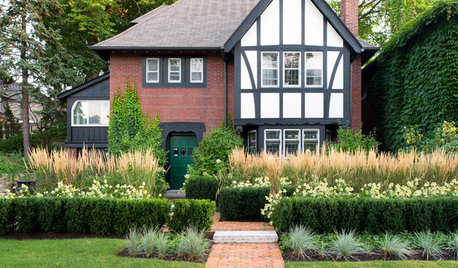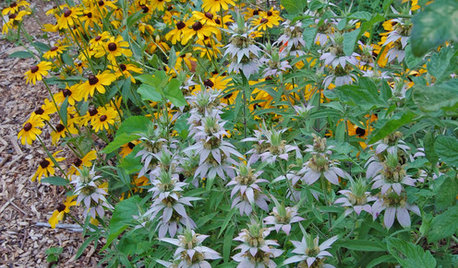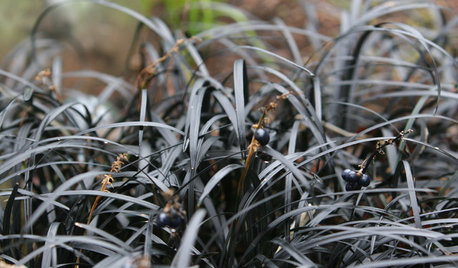unusual & under-used plants
christinmk z5b eastern WA
15 years ago
Related Stories

LANDSCAPE DESIGNHow Low Can Hedges Go? Discover Unusual Garden Borders
Short enough to step over, high enough to be a stretch ... check out these radically different hedge styles and tell us your opinion
Full Story
BATHROOM MAKEOVERSRoom of the Day: Bathroom Embraces an Unusual Floor Plan
This long and narrow master bathroom accentuates the positives
Full Story
FLOWERS AND PLANTSUnusual Totem Pole Cactus Is a Standout in Southwest Gardens
This thornless cactus makes a statement in the ground or in a container in mild-winter climates
Full Story
GARDENING AND LANDSCAPINGThat Gap Under the Deck: Hide It or Use It!
6 ways to transform a landscape eyesore into a landscape feature
Full Story
GARDENING GUIDESGreat Design Plant: Spotted Beebalm (Monarda punctata)
Looking for unusual, long-lasting blooms, low maintenance and deer resistance? Try this self-sowing perennial
Full Story
GARDENING GUIDESPrunus Virginiana Thrives Under Deciduous Trees
Plant chokecherry for showy white flowers favored by native bees in spring, and to provide nesting habitat and food for birds
Full Story
LANDSCAPE DESIGNThe 7 Best Plant Types for Creating Privacy and How to Use Them
Follow these tips for using different kinds of plants as living privacy screens
Full Story
GARDENING GUIDES6 Unsung Bulbs for Fall Planting
Don't hang up your spade after summer — plant these unusual bulbs in fall for a spectacular spring show
Full Story
GARDENING GUIDESGreat Design Plant: Black Mondo Grass
Skip the mall and spend Black Friday planting this unusual low-maintenance grass
Full Story
TREESGreat Design Plant: Coral Bark Japanese Maple, a Winter Standout
Go for garden gusto during the chilly season with the fiery red stems of this unusual Japanese maple
Full StorySponsored



aftermidnight Zone7b B.C. Canada
nckvilledudes
Related Discussions
An unusual plant
Q
ID help for a unusual purple backed leaf plant from the woods.
Q
Whats one of your unusual companion plants?
Q
Shade plants for use under overhang
Q
libbyshome
midnightsmum (Z4, ON)
token28001
Mickie Marquis
mudsnake
little_dani
Nell Jean
aftermidnight Zone7b B.C. Canada
token28001
midnightsmum (Z4, ON)
gldno1
spazzycat_1
christinmk z5b eastern WAOriginal Author
aftermidnight Zone7b B.C. Canada
Mickie Marquis
christinmk z5b eastern WAOriginal Author
aftermidnight Zone7b B.C. Canada
Nell Jean
gardengal48 (PNW Z8/9)
christinmk z5b eastern WAOriginal Author
aftermidnight Zone7b B.C. Canada
gardengal48 (PNW Z8/9)
bellarosa
christinmk z5b eastern WAOriginal Author
alisande
ianna
remontant
bellarosa
christinmk z5b eastern WAOriginal Author